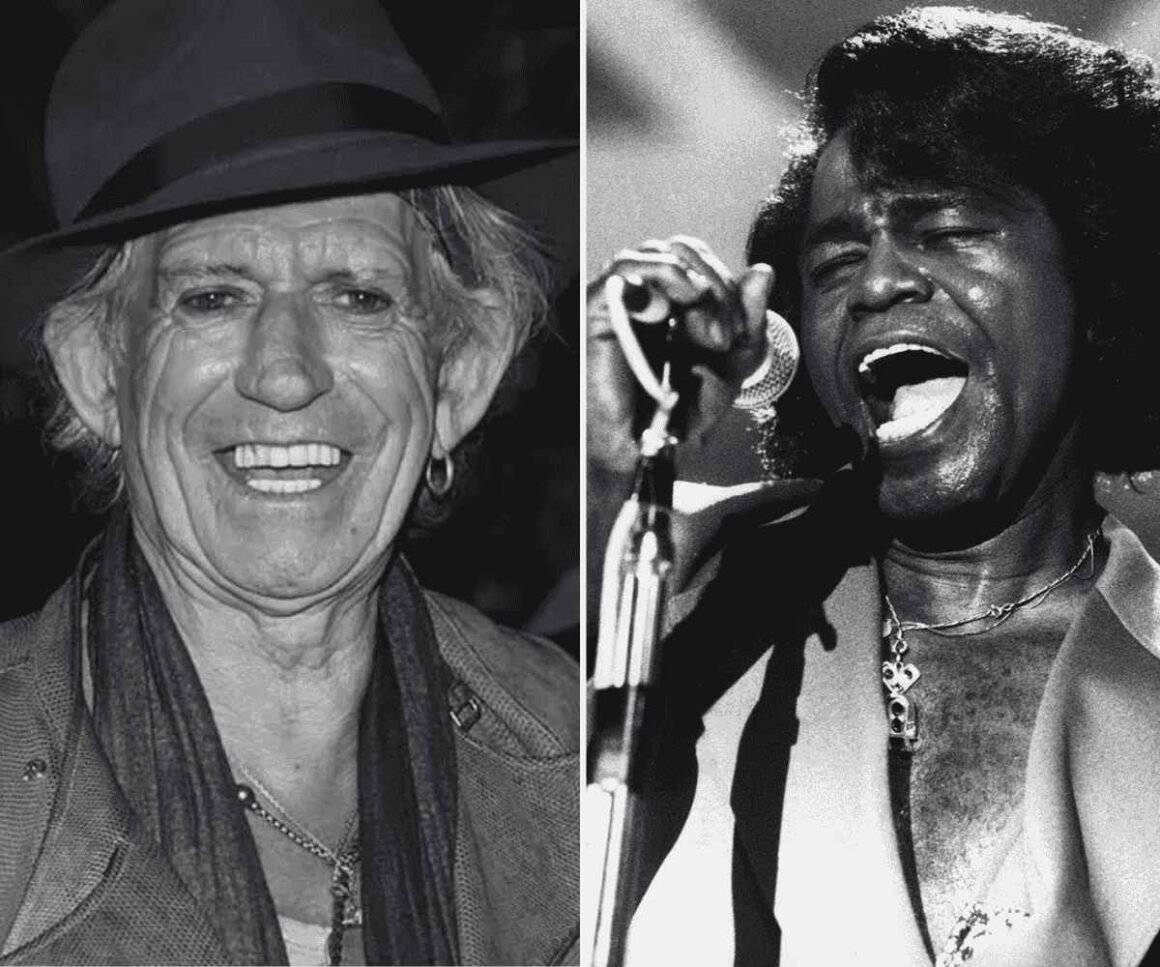Being a celebrity doesn’t give anyone the right to act however they please. While most stars manage to keep their egos in check, there are always a few divas who let fame get to their heads.
For every humble rock legend like Eddie Van Halen, there’s an Axl Rose turning every public encounter into a spectacle. Though Keith Richards of The Rolling Stones is a rock icon who can do whatever he wants, even he wasn’t impressed with James Brown’s larger-than-life behavior.
When The Rolling Stones first got together, Brown’s influence was undeniable. The band’s early sets were full of soul covers, and Richards himself drew inspiration from Brown’s ballads, especially tracks like “I Don’t Mind.” Brown’s influence was woven into the Stones’ sound, yet Richards didn’t share the same admiration for Brown’s personality.
James Brown, known as “The Godfather of Soul,” was legendary for his showmanship. His performances were electric—he didn’t just sing; he controlled every aspect of the show, from the choreography to his band’s tight groove. Brown was called “the hardest-working man in show business” for a reason: from the moment he hit the stage, he gave his audience everything he had.
But that dedication came with a flair for the dramatic. A famous part of Brown’s act involved falling to his knees, only for an assistant to rush out and drape a cape over his shoulders—a move that Richards found completely over the top.
It wasn’t just about the theatrics, though. Brown was known for being tough on his band. No matter how simple the groove, he demanded perfection, expecting his musicians to be as disciplined as he was.
Richards, however, wasn’t impressed by Brown’s strict approach.
Reflecting on his time around Brown, he bluntly said, “I had long enough to realize that just because I dig someone’s work doesn’t mean I have to like them as a person… James Brown can be an asshole. If you want to know, he IS an asshole. But you expect it from him. He pumps himself up to be the baddest and meanest.”
While Richards acknowledged Brown’s musical genius, he didn’t agree with how he ran his shows. The Stones’ approach was far more relaxed, with Richards preferring spontaneity over rigid control.
Even in the later years of their career, Richards remained open to improvisation during live performances, keeping things loose and adaptable—very much the opposite of Brown’s meticulously planned concerts.
In the end, it all came down to style. Richards embraced the chaos of live rock ‘n’ roll, treating each show like an extended jam session. Brown, on the other hand, ensured every beat, every move, and every note was flawlessly executed.
Two icons, two different philosophies—one unshakable truth: James Brown might have been tough to work with, but his legacy as a performer remains unmatched.







